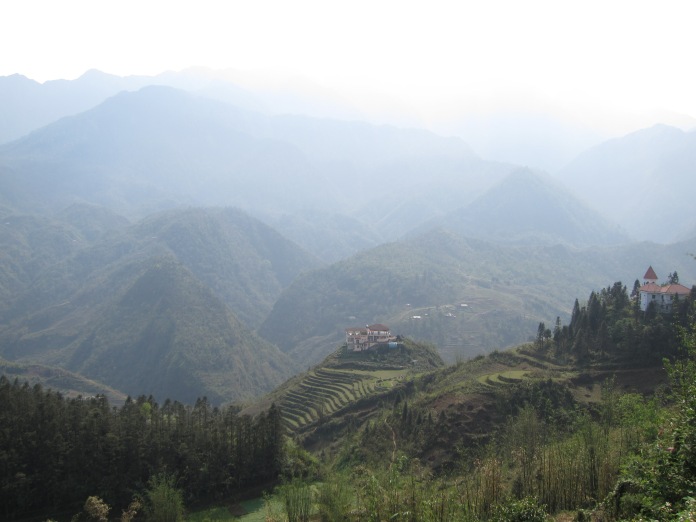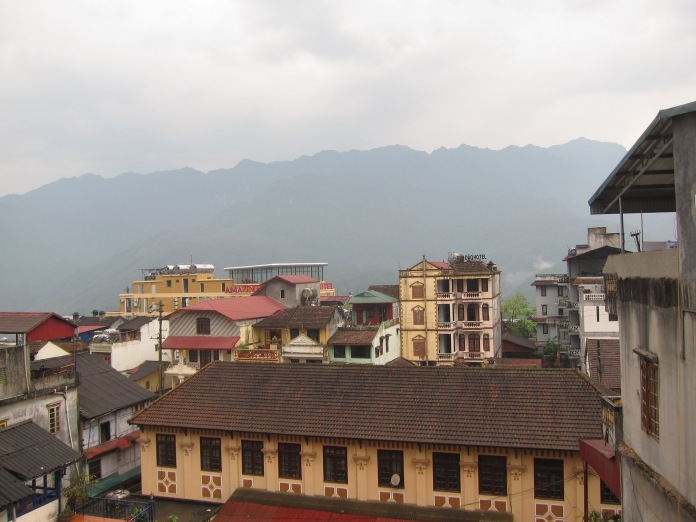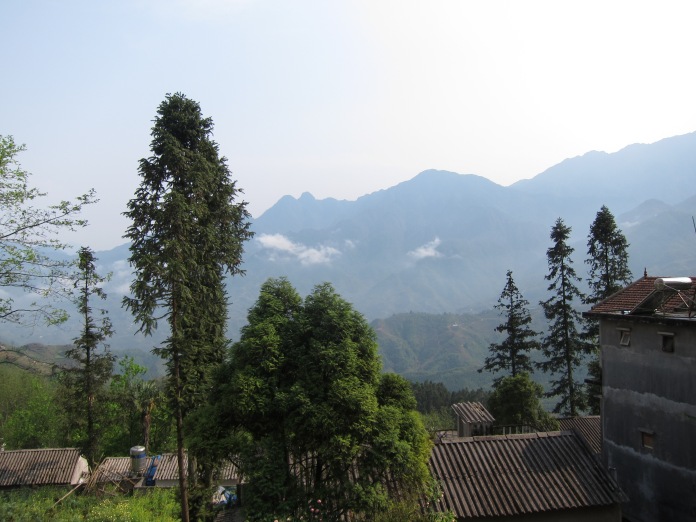It had been raining since I arrived in Sapa two days ago. Sapa is in northern Vietnam near the Chinese border, and is a major tourist hub for trekking in the surrounding hills which are populated by various minority tribes, especially the Hmongs. The town is perched on a hillside and offers splendid views of the valley below when the fog clears.
Immediately upon alighting from the bus, we tourists were followed down the cobbled streets by Hmong women in traditional dress, aggressively selling their souvenirs and offering to serve as tour guides on treks to their villages. They were skilled businesswomen. They spoke English to me, and it seemed they had also learned to speak enough Chinese and French, among other languages, to engage in basic conversations with tourists. As they followed me down the street, they kept saying, “you buy from me, buy something.” I was worried that I would continually be accosted by these women during my stay in Sapa, but the next day I was left alone most of the time. It seemed they knew who had just come and who had been in Sapa for a while, and they targeted the newcomers as they arrived. I didn’t buy anything from them.
Instead of material items I was more interested in having new experiences, and was particularly looking to do a short trek to the nearby villages. I investigated some tour options with a social welfare organization called Sapa O’Chau (O’Chau means “thank you” in the Hmong language). O’Chau works closely with the local Hmong population, and in addition to coordinating tours they also help Hmong youth access secondary education.
Yesterday I was contemplating my options while walking near my hotel when a Hmong woman began speaking to me about taking me on a trek. Her name was “Zee” and she spoke good English, and she also had a small book with handwritten comments from tourists praising her services. I made an agreement to meet her this morning at around 9:30 a.m. for a daylong trek to her village in the valley. She quoted a reasonable price, and I felt good about paying my tour guide directly instead of going through an agency. Zee tied a bracelet around my wrist and said, “if anyone talks to you about a trek, tell them you go with Zee.”
So this morning I met Zee and her 14 year-old daughter, Nying, along with three other tourists who would be joining us for the day. The others were young French women, friends who were spending their vacation together traveling around Southeast Asia.
We set out in the cold drizzle. I had a raincoat, umbrella and waterproof shoes, so I felt confident that I would stay fairly dry until the skies cleared in the afternoon, as Zee said was likely. Much of the time we were literally walking through a cloud, and so were unable to see into the valley where our destination lay.
Unfortunately the skies did not clear, and instead continued to send down an incessant drizzle that occasionally grew into a downpour. Despite my raingear by mid-day I was soaked from the waist down, and my boots made squishing noises with each step.
Even with the poor visibility and my wet condition, I enjoyed being in the fresh air and passing through agrarian villages full of various Hmong people identifiable by their traditional garments. We stopped near one of the villages for lunch inside a large shed full of Hmong women and children, including a few babies strapped to the backs of their mothers or older sisters.
After lunch we continued walking until we reached Zee’s village in the late afternoon. We met her husband and two other children and had some Vietnamese green tea while drying out near the fire. I learned that the family was from the Black Hmong tribe, and that Zee in fact spoke very little Vietnamese.
She said her husband spoke more fluent Vietnamese and so could handle any business with the majority Vietnamese population in the area. While she was out selling souvenirs and guiding treks, her husband would manage the household and land and care for the children when they were home from school. There was much work to be done at home, including tending the chickens, repairing and maintaining the wooden structures, and farming the small plot of land where they grew rice and other crops.
At the end of the day Zee placed a metal bracelet on my wrist (included as part of the tour, she said), and hailed a Xe Om (motorcycle taxi) for me. I returned to my hotel still quite soaked, but pleasantly tired and thankful to Zee for guiding us on a short adventure, introducing us to her family and showing us the way of life in her village. O’Chau, Zee!









She sounds like an inspirational entrepreneur!
LikeLike